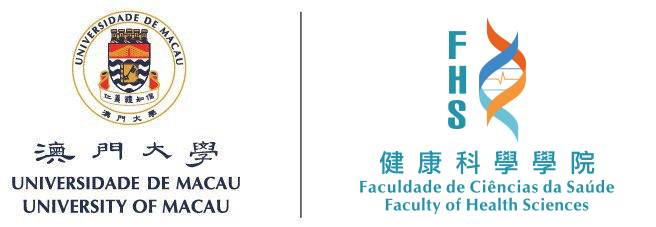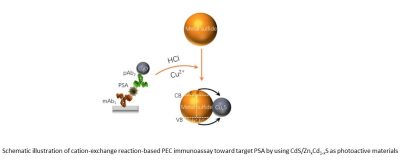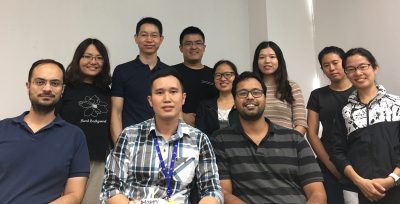A research team led by Henry, Hang Fai KWOK, Associate Professor in the Faculty of Health Sciences (FHS), University of Macau (UM), has made significant progress in the development of sensitive photoelectrochemical immunosensors. The team used cation exchange reaction to synthesise advanced nanomaterials for the fabrication of high-efficiency biosensing systems that can sensitively detect tumour biomarkers. The study has received considerable attention in the field of biosensor development and cancer diagnostics. The research results have been published in the internationally renowned journal Biosensors and Bioelectronics.
Biomarkers are biological molecules produced characteristically by cancer cells that can be used to distinguish cancer cells from normal cells. They are mostly found in the tissue, blood, and body fluid of patients, and are often used to help choose the best precision treatment for cancer patients. One of the most common biomarkers used for diagnosing prostate cancer is prostate-specific antigen (PSA). In the last decade, scientists have been investigating ways to improve the sensitivity of PSA detection to allow doctors to more accutately identify benign and malignant tumours. The namomaterials synthesised by Prof. Kwok’s team can be used to detect PSA.
Based on the Hard and Soft Acids and Bases (HSAB) Principle, Prof Kwok’s research team synthesised hollow Cu2-xS photoactive materials for the photocurrent detection of PSA. The research team first synthesised cubic Cu2O and obtained cubic Cu2-xS through surface sulfidation and HCl etching. They found that a mix of CuS, phosphine (TBP: tributylphosphine) and other metal salts could replace Cu+ ions to obtain new metal sulfides without changing the framework, size, or thickness of the original material. This interesting phenomenon could be explained by the HSAB theory, which states that soft base combines more readily with soft acid (Cu+ ) and displaces Cu+ from the framework. Based on this result, the team applied the HSAB-based reaction system in developing novel photoelectrochemical PSA immunoassays. The study has showed that polymetallic-doped sulfides (ZnxCd1-xS) have a better photocurrent response than pure binary sulfides. These excellent photoelectric conversion materials can sensitively detect PSA, with a wide linear range from 1.0 pg/mL to 10 ng/mL and a minimum detection limit of 0.32 pg/mL.
Cation exchange reaction can be widely used to synthesise advanced nanomaterials for the fabrication of high-efficiency biosensing systems. This simple synthesis method does not require demanding reaction conditions and thus has the potential to be used for large-scale preparation of nanomaterials. The study also shows that ZnxCd1-xS hollow cubes can be used as photoactive materials in sandwich immunoassays for ultra-sensitive detection of tumour biomarkers. It is expected to provide new ideas for controllable synthesis and the large-scale preparation of photoactive materials for biosensing applications.
Prof. Kwok is the corresponding author of the study and his PhD students Libin GUO and Bin LI are the co-first authors. Lilin GE, Associate Professor in the Nanjing University of Chinese Medicine, who was previously a postdotoral fellow in the research team, also contributed to the study. The project was supported by the Science and Technology Development Fund, Macao SAR (File no: 0055/2019/A1 and 0010/2021/AFJ). The full version of the research study can be viewed at: https://pubmed.ncbi.nlm.nih.gov/35718654/



